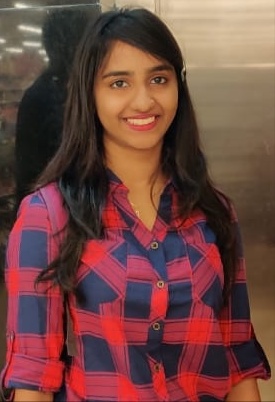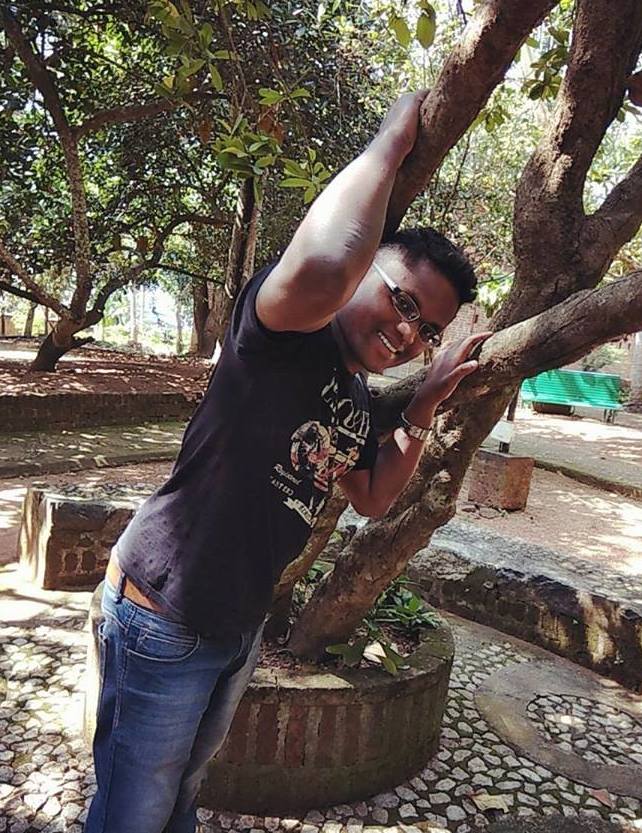G K Vankar
 It is difficult to say when first Gujarati Dalit writing came into existence. But undoubtedly the publication of Aakrosh, a poetry journal of Dalit Panthers, on 14th April, 1978, was an important milestone. The anti-reservation agitations in Gujarat in 1981 and 1985 generated intense awareness about dalit rights and led to a surge of creative output of dalit literature. Within almost three decades Dalit literature in Gujarati has established itself firmly as a genre which cannot be ignored.
It is difficult to say when first Gujarati Dalit writing came into existence. But undoubtedly the publication of Aakrosh, a poetry journal of Dalit Panthers, on 14th April, 1978, was an important milestone. The anti-reservation agitations in Gujarat in 1981 and 1985 generated intense awareness about dalit rights and led to a surge of creative output of dalit literature. Within almost three decades Dalit literature in Gujarati has established itself firmly as a genre which cannot be ignored.
Like all dalit literatures, Gujarati dalit literature is about assertion of human rights, self-pride, revolt against social injustice, chronicles of personal and collective suffering, and hopes and aspirations for a new society devoid of discrimination. It definitely is a weapon for the struggle; it addresses primarily dalits but the other readers are also considered. As Neerav Patel puts, “I wish you to be not only my reader but also an empathizer, then and only then perhaps my pain would end.” The authors range from college professors to primary school teachers, unemployed youth to politicians, IAS officers to factory workers. There are only a few women writers. There is Jayant Parmar who writes in both Urdu as well as Gujarati, Neerav Patel published two of his poetry collections in English before he published a Gujarati collection!
In this brief introduction, the focus is on poetry though there are important contributions in short stories, novels, autobiographical writings and plays. The Dalit writings were not welcomed in the beginning– what is dalit literature? Can literature be dalit? What is the need for dalit literature? These were the frequently asked questions. Those who still ask these questions should come to terms with these realities: As Raju Solanki puts it in ‘The Enclosure’:
“Today watching my unrestrained expressions
On the stone inscriptions of time
He says ‘your poetry is an enclosure’.
I stare
At the wild cacti
Spread all over his face.
I became man,
Upright,
A thunder piercing the void
That stretches from sky to earth.
My cry frightened him and
Laughter stunned.
He took my struggle
Against the system of enclosure
As a challenge to his very existence.
And again he confined me to an enclosure.
Now how can I ask
My hands which
Rise to clear the cactus wall-
Behold, for the sake of man!’”
Or the way Sahil Parmar says in ‘The Need’:
“The lens of their camera is fissured,
They made me slave
And have taken my photographs in different poses.
Now, I take the snaps
My own and theirs
As they are,
With my own camera,
That’s why they shout
There is no need of another camera
There is no need of another camera.”
Raman Vaghela in his song appeals to the non-dalits:
“now you open the doors that were closed
the intact silence of sea that lasted so many years speaks something slowly
the words which were shy of touch, now dare with open chest,
listening to the stories of pain, you open the doors of your eyelids
now you open the doors that were closed.”
Usually Dalit poetry is not written in meters; the most important conditions are authentic experience, commitment to dalit fraternity, social justice, vehement opposition of decayed social order and oppression in the name of religion. Now there are poets like A.K.Dodiya, Kisan Sosa and Harjivan Dafda who write Ghazals in meters. Harish Mangalam, Pathik Parmar, Sahil Parmar, Madhukant Kalpit and Raman Vaghela write songs in the folk song style. Some poets have written poetry in meter, most notable example is Bipin Meshiya.
Dalit literature provided the much needed freshness to mainstream Gujarati literature, for example in his poem “How far is mama’s home?” Neerav Patel beautifully describes the tribal workers migrating for livelihood:
“Surviving so many spoiled cyclones
In lush green forests, drying like bald black baval trees,
A long row of helpless bodies
At the sides of roads
With the approximate vision of the eyes fixed in the earth
Like the herd of sheep
With low bent heads
Walks and walks one after the other.”
Sahil Parmar gives new similes in his poem ‘Pratiruponi Khoj’:
“your face is like an oval pestle for making chilly powder
your love is like the water noisily rushing with warm air, from municipal tap on a winter morning
as you take care of not putting salt instead of sugar while preparing tea
your body is like a bordi thrashed by Patel boys and yet sweet still
as a doll with faded colors too gives joy to a child.”
These two are excellent examples of how a dalit poet re-invents the language creating dalit aesthetics. Harish Mangalam describes the change in a dalit youth who went to the city thus:
“The real Hariya has run away, catch him, o brother, catch him,
from the city, thereafter were found seeds of a bomb..”
Self-pride finds expression in Shyam Sadhu like this:
“You wipe out your rainbow
I will paint my own shravan.”
B.N.Vankar rejects usefulness of decayed religious rituals with much assertion in his poem ‘Overbridge’ –
“This cow has
never walked to our place,
never mooed
nor has she given us milk
then what is this
debate and distress?
to cross the vaitarni,
don’t worry,
we shall construct
an overbridge.”
A.K.Dodiya asks:
“why to stare at the sky?
talk about aim and shoot an arrow!”
Usha Makwana, a woman poet, challenges God Himself:
“Its easy to wear chakra, bow and arrow,
once, only once get hold of a broom and walk on the road, its easy to call yourself Hari,
I dare you become Harijan, once, only once.”
Prof. Yashwant Vaghela asks Valmiki:
“O Valmiki,
with a killing of a kronch bird
you grieved, and your grief turned into stanza creating Ramayana,
from our daily screams and groans,
tell us
what will be created?”
Manish Parmar in his ghazal describes what he has to write:
“I write accounts of each and every tear
How many books of pains should I write?
I hear screams breaking all around
I write the unfinished answers.
I have never seen the white light,
I am the night, how can I gift you suns?”
Dan Vaghela is happy when he says “with the blackness of bows the alphabet feels polluted and yet with faith I learnt Sanskaras.”
Kanwal Kundlakar calls himself adharmi, non-religious:
“In no information form
You can write Adharmi
In the space for religion, and hence
My own religion, swadharma, cannot come into being.’
Abject poverty of a waste paper collecting girl is described by Kantilal Katil:
‘the heap of waste paper is my father
and plastic bag my mother.”
Other literary Genres
 Joseph Macwan arrived on the Gujarati literature canvas with his novel, Angaliyat. Dhawal Mehta has considered it as the fourth wave. Joseph received the Sahitya Akademi award for this, it is based on the lives of the weaver community in Kheda. It depicts the struggle of dalits, their agony and spirit, and high values. Some critics consider Macwan is at his best in his character sketches, like in his book Vyathanan Vitak, the stories of pain. He has taken Gujarati dalit literature to new heights. He has opened a new world to non-dalit readers, and has expanded their sensibility. His depiction of women characters in particular has achieved the status of a classic.
Joseph Macwan arrived on the Gujarati literature canvas with his novel, Angaliyat. Dhawal Mehta has considered it as the fourth wave. Joseph received the Sahitya Akademi award for this, it is based on the lives of the weaver community in Kheda. It depicts the struggle of dalits, their agony and spirit, and high values. Some critics consider Macwan is at his best in his character sketches, like in his book Vyathanan Vitak, the stories of pain. He has taken Gujarati dalit literature to new heights. He has opened a new world to non-dalit readers, and has expanded their sensibility. His depiction of women characters in particular has achieved the status of a classic.
Bhalbhankhalu (The Dawn) by Dalpat Chauhan is a novel dealing with an attempt of a dalit father to enroll his daughter in a primary school in pre-independence era. Malak (The country) is a novel on forcible migration when dalits fear danger to their lives. The reason? There is a rumor that a newborn baby of a woman is very similar to the dalit land laborer. Rather than being a novel with a single hero, the whole dalit community is at the center of it. Gidh (Vulture) by Dalpat is a novel that again deals with atrocities on dalits, its seeds are in a dalit man’s attraction to a non-dalit woman. It vividly describes the process of carrying and cutting open dead buffalo for the first time in literature. Dalit dependence on non-dalits, their village customs, pain, and bonded labor in unclean occupations are depicted powerfully. The author himself notes that “This is history of our dark, unknown aspect. It is only a small corner of darkness in which we were forcibly pushed.”
Tirad (The Fissure) by Harish Mangalam is a novel in which Joiti, the dalit woman’s oppression by the society is depicted. Choki (The Vigil), by the same writer, depicts rural life; both human nature and human relationships become the theme in the dalit background.
The Gujarati dalit short story genre has many achievements, Mohan Parmar’s collection Poth was short-listed for Sahitya Akademi award. Though there are only few stories with the Dalit theme, he depicts the meekness of the non-dalit society and its inner psychological dynamics. In 2011, he won the Sahitya Akademi award for his short story collection Anchalo.
Dalpat Chauhan and Harish Mangalam are two other leading story writers who have bagged several awards. Dalpat Chauhan’s Munzaro (The Anxiety) includes ‘Munzaro,’ ‘Dar,’ and ‘Eru Zanzrun’ as important stories. Harish Mangalam in his collecton Talap ( The Craving) has given classic dalit stories like Zal, Dayan and Utantiyo.
Dharmabhai Shrimali has written Narak (Hell), which takes the readers to the shame of the nation – the manual scavenger’s plight. B.N.Vankar’s collection Vilopan is noteworthy for his intimate knowledge of dalit life in the village.
Compared to Marathi language, Gujarati autobiographies are scarce. The only autobiography is Purna Satya (The Total Truth) by B. Keshrshivam. Dharmabhai Shrimali has written a memoir, Bhandariyun. Samajmitra has published a special issue on autobiographical writings edited by Nirav Patel. A collection of memoirs about Dalit mothers ‘Madi mane sambhare re!” edited by Chandu Maheria. Similarly ‘Pitrugatha’ edited by Balkrishna Anand are memoirs about Dalit fathers.
Drama is a less often written genre: Bamanvadni barakhadi (The Alphabet of Brahmanism) by Raju Solanki and ‘Ek Rakabi Futi’ (A Saucer Broke) are the two plays which have been staged. The first one deals with social injustice and reservation as one limited remedial measure, while the second deals with domestic violence. Dalpat Chauhan has given plays like Anaryavart, Harifai, and Patanne gondrethi. Bahishkar (The Boycott) is a play by Mohan Parmar which has a theme of reverse boycott – the safai worker.
Late Tikesh Makwana, Chandu Maheria, Raju Solanki and Joseph Macwan have written reports which touch dalit life; they are noteworthy for their penetrating research, sensitivity and vision.
Naya Marg, Disha, Hayati, Dalit Shakti and Adhikar are the magazines/ journals besides other literary journals which have provided a platform for dalit literature. Currently ‘Adhikar’ is the NGO regularly organizing the programmes for dalit literature. Shabdasrusti, a journal of Gujarati Sahitya Akademi had a special number on Dalit literature in the issue of Nov. 2003. Indian Literature, Yuddharat and Aam Aadmi had their issues, in English and Hindi respectively, focused on Gujarati dalit literature.
Three English anthologies of Gujarati dalit literature are now available. These are: The Silver Llining: A Selection of Gujarati Dalit Poetry ( Eds. Darshna Trivedi and Rupalee Burke), 2000; Tongues of Fire: A selection of Gujarati Dailit Short Stories (Eds. Darshna Trivedi and Rupalee Burke), 2000 and Eklavyas with thumbs – Selections from Gujarati dalit literature (Ed. K.M.Sherriff), 1999.
Dalit Shakti (Nov-Dec,2005) published a special issue on Dalit Literature with introduction to 250 books from all genres of literature. Dalit literary works have received several awards; that is an indication of its powerful existence and literary excellence.
I thank Raju Solanki, Chandu Maheria, Sahil Parmar, and Krunalini Solanki for their help in preparing this brief overview of Gujarati dalit literature.
~~~~~~
Dr G K Vankar, a leading Psychiatrist and Medical Educator, is a Professor and Head, Dept. of Psychiatry, B.J.Medical College, Ahmedabad.
He has translated into English many works of Gujarati Dalit writers – poets as well as fiction writers. His translations have appeared in Indian Literature, Kavya Bharathi, and The Trees of Tongues edited by E.V.Ramakrishnanan, Achhandas (Gujarati free verse poems in translation), and Museindia ( e-journal). His translations of Sahitya Akademi winner Urdu Poet Jayant Parmar, ‘Pen, Inkpot and other poems‘ (2011) and Gujarati Dalit Poet Bhi.Na.Vankar‘s ‘Over Bridge Selected Poems‘ are awaiting publication.
He can be reached at his e-mail: drgkvankar@yahoo.com.










